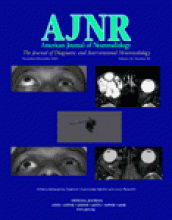Article Figures & Data
Tables
Contribution of MR imaging to understanding the pathophysiology of multiple sclerosis and Alzheimer disease
Multiple Sclerosis Alzheimer’s Disease Disease pathophysiology Neurodegeneration in addition to inflammation Inflammation in addition to neurodegeneration Diffuse structural tissue damage Damage to normal-appearing white matter Damage to normal-appearing gray matter White/gray matter involvement Damage to gray in addition to white matter Damage to white in addition to gray matter Earliest clinical phase Prognostic value of multiple MR imaging lesions. Presence of neurodegeneration Hippocampal atrophy as part of the “Alzheimer disease signature” Cortical plasticity Cortical reorganization following focal and diffuse tissue injury Cortical reorganization possibly following plaque and tangle deposition Monitoring treatment efficacy MR imaging metrics are primary end points in phase II and secondary end points in phase III trials MR imaging technology exploited only in most recent trials












